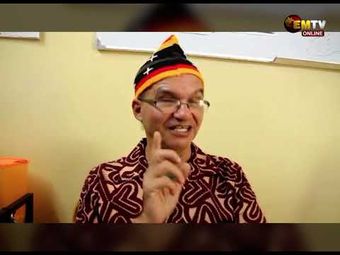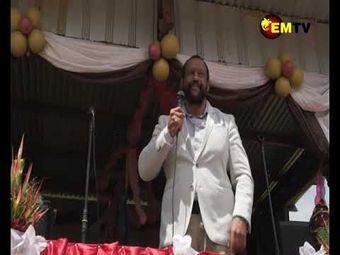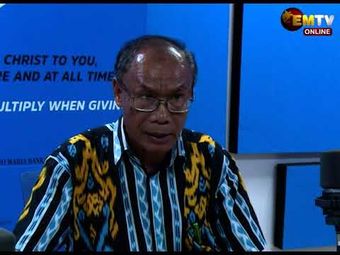Emay ‘Sorcerers’
- Description:
- The Awiakay distinguish between two types of sorcery: tumbi ‘poison’ and emay ‘assault sorcery’. Emay, corresponding to Tok Pisin term sanguma, is a specific form of ‘assault sorcery’ (for more on Awiakay notion of emay and the corresponding Tok Pisin term sanguma see Hoenigman 2015: 31). Like tumbi, it can refer both to sorcery itself or to the one who performs it. By chanting a particular spell, chewing ginger and spitting the resulting substance on their own body, a man or a woman who is familiar with this ritual can invoke the spirits who will give him or her superhuman powers. They will use these powers in order to attack and kill another person. If one has a dispute with someone, this person may resent it so much that they go and find an emay from another village, and ask them to kill that person. Sometimes one does not even know where the resentment came from, so even an apparently innocent person can be attacked. However, a fear of sorcery drives people to try to settle resentments so that they do not escalate into murderous episodes. An emay can change into certain animals or into an unrecognizable person. They can travel long distances in a moment in order to come close to their intended victim. Emay attack a person when he or she is alone in the bush, or even in the house if the person is alone. During the attack the emay turns back into a human, cuts open their victim’s abdomen, removes all the bowels, fills the abdomen with leaves, sews up the wound so that nobody can see it, and tells the person when they will die. This person then returns to the village, but is no longer the same, as their mima maŋga ‘the seat of reason, thoughts and emotions’, has been removed during the malicious operation. They have no thoughts of their own; they can only speak through the power of the emay and they die on the day which was foretold. After the final design of this string figure emerges, the string figure-maker usually says: “Elakay, emay.” ‘That’s it, sorcerers.’ After that, he/she makes another few moves, and the emay run away. Ambiakan ambla, the Awiakay say, ‘They are running away.’ Images: 02: Darja Munbaŋgoapik showing the final design ‘sorcerers’ 03: The sorcerers running away Hoenigman, Darja. 2015. ‘The talk goes many ways’: Registers of language and modes of performance in Kanjimei, East Sepik Province, Papua New Guinea. Canberra: The Australian National University. (PhD thesis.) . Language as given: Awiakay. You can access this item at the PARADISEC website. You will need to sign up or sign in first.
- Format:
- MovingImage
- Collections:
- PARADISEC Catalog
- Contributors:
- Darja Hoenigman
- Content partner:
- PARADISEC
- Availability:
- Not specified
-
Copyright status: All rights reservedFind out more about what you are able to do with this itemThis item is all rights reserved, with means you'll have to get permission from PARADISEC before using it. For more information, please see our use and reuse page.More informationPARADISEC has this to say about the rights status of this item:
Open (subject to agreeing to PDSC access conditions)
What can I do with this item?Non-infringing useNZ copyright law does not prevent every use of a copyright work, and this item may be hosted by an international institute or organisation. You should consider what you can and cannot do with a copyright work.No sharingYou may not copy and/or share this item with others without further permission. This includes posting it on your blog, using it in a presentation, or any other public use.No modifyingYou are not allowed to adapt or remix this item into any other works.No commercial useYou may not use this item commercially.
Welcome and warm Pasifik greetings
The information on this site has been gathered from our content partners.
The names, terms, and labels that we present on the site may contain images or voices of deceased persons and may also reflect the bias, norms, and perspective of the period of time in which they were created. We accept that these may not be appropriate today.
If you have any concerns or questions about an item, please contact us.


